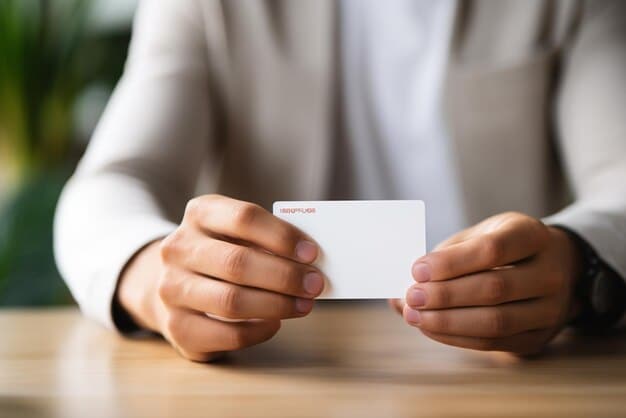Master Your Finances: The Envelope System for Budgeting Success

The Envelope System is a practical budgeting method that helps you control your spending by allocating specific amounts of cash for various expense categories each month, promoting financial awareness and discipline.
Are you looking for a hands-on method to get your spending under control? The Envelope System might be the perfect solution. This budgeting technique helps you allocate funds for specific categories, allowing you to visually track and manage your expenses over the next six months and beyond.
What is the Envelope System?
The Envelope System is a budgeting method where you allocate a specific amount of cash to different spending categories each month. The goal is to physically put cash into envelopes labeled for expenses like groceries, gas, dining out, and entertainment.
When you need to spend money, you take it from the appropriate envelope. Once the envelope is empty, you can’t spend any more in that category for the rest of the month. Let’s dive deeper into how this works.
How the Envelope System Works
The Envelope System is straightforward. First, you create a budget and decide how much money you need for each spending category. Then, you withdraw the cash from your bank account and place it in the corresponding envelopes. As the month progresses, you use the cash from the envelopes rather than credit or debit cards.
This method offers a visual and tactile way to manage your spending. By physically seeing the money diminish, you become more aware of your spending habits and are more likely to stick to your budget.
Benefits of Using the Envelope System
There are several advantages to using the Envelope System. It enforces spending limits, promotes financial awareness, and can help break bad spending habits. Let’s explore these benefits:
- Enhanced Spending Awareness: Physically handling cash makes you more conscious of where your money is going.
- Reduced Overspending: When the envelope is empty, you can’t spend any more in that category.
- Debt Reduction: By controlling spending, you may find yourself with extra funds to put towards debt repayment.
- Improved Budget Adherence: The visual reminder can help you stick to your financial goals.
Ultimately, the Envelope System can be a powerful tool for those who struggle with overspending or want to gain better control of their finances. It brings a tangible element to budgeting that digital methods sometimes lack.

Setting Up Your Envelope System
Setting up the Envelope System involves several steps, starting with creating a budget, identifying your spending categories, and preparing your envelopes. Let’s go through each step in detail to get you started on the right foot.
Proper setup is crucial to ensure the system works effectively for you. Here’s how to get started.
Step 1: Create a Budget
Before you can start filling envelopes, you need to know how much money you have available and where it needs to go. Create a detailed budget that outlines your income and expenses. Prioritize essential expenses like rent, utilities, and transportation.
Use budgeting apps, spreadsheets, or even a simple notebook to track your income and expenses. The key is to have a clear picture of your financial situation.
Step 2: Identify Your Spending Categories
Determine which spending categories you want to control using the Envelope System. Common categories include groceries, gas, dining out, entertainment, clothing, and personal care. Be comprehensive in your categories to ensure that all your spending is accounted for.
Consider dividing larger categories into smaller ones if necessary. For instance, you might separate groceries into “Weekly Groceries” and “Household Supplies” to better track your spending.
Step 3: Prepare Your Envelopes
Gather enough envelopes for each of your spending categories. Label each envelope clearly with the name of the category. You can use paper envelopes, but reusable cash envelopes are a more durable and environmentally friendly option.
Consider using different colors or designs for each category for easy identification. This will make the budgeting process more organized and visually appealing.
Step 4: Fill Your Envelopes with Cash
Withdraw cash from your bank account equal to the amount you’ve budgeted for each category. Divide the cash into the corresponding envelopes. If you’re paid bi-weekly, you can fill the envelopes twice a month to align with your pay schedule.
Ensure that the amount in each envelope matches your budget allocation. Double-check your figures to avoid any discrepancies.
By following these steps, you’ll have a well-organized Envelope System ready to help you manage your spending more effectively. Remember to review and adjust your budget regularly to ensure it aligns with your changing needs and circumstances.
Tips for Successfully Using the Envelope System
Using the Envelope System effectively requires discipline, consistency, and a few strategic approaches. Simply setting up the envelopes isn’t enough; you need to actively manage them and adjust as needed.
Here are some tips to help you maximize the benefits of this budgeting method.
Track Your Spending
Keep a record of every transaction you make from each envelope. Note the date, amount, and what you purchased. This will help you stay aware of your spending habits and identify areas where you might be able to cut back.
You can use a small notebook, a tracking app, or a simple spreadsheet to record your expenses.
Adjust as Needed
Your initial budget might not be perfect, and that’s okay. Monitor your spending patterns and adjust your budget categories accordingly. If you consistently run out of money in one envelope, consider reallocating funds from another category.
Flexibility is key. Don’t be afraid to make changes to your budget to better suit your actual spending habits.
Handle Rollovers Strategically
If you have money left over in an envelope at the end of the month, decide what to do with it. You can roll it over to the next month, put it towards a savings goal, or use it to pay down debt.
Having a plan for surplus funds can prevent you from impulsively spending the extra cash.
Use Technology to Supplement
While the Envelope System is inherently a cash-based method, you can use technology to supplement it. Budgeting apps can help you track your spending, set goals, and analyze your financial data.
Consider using apps that allow you to manually enter your cash transactions or connect to your bank accounts for a comprehensive view of your finances.
Stay Committed
The Envelope System requires commitment and discipline. It may take some time to adjust to using cash for most of your expenses. Stick with it, and you’ll likely see positive changes in your spending habits and financial management.
Set realistic goals and celebrate your successes along the way to stay motivated.

Potential Challenges and How to Overcome Them
While the Envelope System is effective, it’s not without its challenges. From carrying large amounts of cash to dealing with online transactions, there are potential obstacles you might face. Understanding these challenges and having strategies to overcome them is essential for long-term success.
Let’s explore some common issues and how to address them.
Carrying Cash
One of the primary challenges is carrying around large amounts of cash. This can feel unsafe and inconvenient. To mitigate this, only carry the cash you need for that day or week. Keep the rest at home in a secure location.
Consider using a money belt or a discreet wallet to carry your cash securely.
Online Transactions
The Envelope System is designed for in-person transactions, so online purchases can be tricky. One solution is to create a separate envelope specifically for online shopping. Allocate a certain amount each month and use a prepaid debit card to make the purchases.
Alternatively, you can manually deduct the online purchases from the appropriate physical envelope amount and keep a running tally.
Impulse Purchases
Impulse purchases can derail your budgeting efforts. The best way to combat this is to avoid temptation altogether. Steer clear of unnecessary shopping trips and unsubscribe from promotional emails.
When you do need to shop, make a list and stick to it. Avoid browsing aisles that are likely to trigger impulse buys.
Lack of Accountability
Without someone to hold you accountable, it’s easy to stray from your budget. Find a friend or family member who will check in with you regularly and provide support. You can also join an online budgeting community for encouragement and advice.
Sharing your progress and challenges with others can help you stay on track.
Tracking Expenses
Manually tracking expenses can be time-consuming. Use budgeting apps or spreadsheets to streamline the process. Many apps allow you to manually enter cash transactions and categorize them for easy tracking.
Set aside a few minutes each day or week to update your expense records.
By anticipating these challenges and implementing effective strategies, you can successfully navigate the obstacles and reap the rewards of the Envelope System.
Adapting the Envelope System for the Digital Age
In today’s digital age, where most transactions occur online or via card, adapting the Envelope System might seem counterintuitive. However, with a few modifications, you can still leverage this hands-on method while accommodating digital spending habits.
Here’s how to adapt the Envelope System for the digital world.
Virtual Envelopes
Instead of using physical envelopes, create virtual envelopes using budgeting apps or spreadsheets. Allocate funds to each category and track your spending as you make purchases. This allows you to enjoy the benefits of the Envelope System without handling cash.
There are several apps specifically designed for envelope budgeting, such as YNAB (You Need A Budget) and Mvelopes.
Prepaid Debit Cards
Use prepaid debit cards for different spending categories. Load each card with the budgeted amount for that category and use it for online and in-store purchases. This provides a digital equivalent to the physical envelope system.
Reload the cards at the beginning of each month with the budgeted amounts.
Cash Withdrawal System
Continue to withdraw cash for specific categories where cash is still commonly used, such as farmers’ markets or local shops. For other expenses, track them manually in your virtual envelopes.
This hybrid approach combines the benefits of both cash and digital spending.
Automated Tracking
Link your bank accounts and credit cards to budgeting apps that automatically track your transactions. Categorize your spending as it occurs to align with your virtual envelopes. This automates the tracking process and provides real-time insights into your spending habits.
Regularly review your transactions to ensure they are correctly categorized and to identify any areas where you might be overspending.
Digital Budgeting Tools
Utilize digital budgeting tools to set spending limits, track progress, and receive alerts when you’re nearing your budget limits. These tools can enhance your awareness and help you stay on track with your financial goals.
Explore the features of different budgeting apps to find one that best suits your needs and preferences.
By incorporating these adaptations, you can effectively use the Envelope System in the digital age, combining the benefits of hands-on budgeting with the convenience of modern technology. This approach allows you to maintain control over your spending while leveraging the tools available to make the process more efficient.
Long-Term Financial Control with the Envelope System
While the Envelope System is often seen as a short-term solution for immediate spending control, it can also be a foundation for long-term financial stability. By consistently using this method, you can develop better money management habits and achieve your financial goals over time.
Here’s how the Envelope System can contribute to long-term financial control.
Building Financial Awareness
The Envelope System fosters a deep understanding of your spending patterns. Over time, you become acutely aware of where your money is going, which can lead to more informed financial decisions. This awareness is crucial for long-term financial health.
Continuously tracking your expenses and reviewing your budget will reinforce this awareness.
Developing Disciplined Spending Habits
By adhering to the Envelope System, you cultivate disciplined spending habits. You learn to prioritize needs over wants and to make conscious choices about how you allocate your resources. This discipline is invaluable for long-term financial success.
Regularly setting and reviewing your financial goals will strengthen your commitment to disciplined spending.
Creating a Sustainable Budget
The Envelope System helps you create a sustainable budget that aligns with your income and expenses. By regularly adjusting your budget categories and tracking your spending, you can develop a financial plan that works for you in the long run.
Periodically reassess your budget to ensure it reflects your current financial situation and goals.
Achieving Financial Goals
The Envelope System can be a powerful tool for achieving long-term financial goals, such as saving for retirement, buying a home, or paying off debt. By controlling your spending and allocating funds strategically, you can make significant progress towards these goals.
Set specific, measurable, achievable, relevant, and time-bound (SMART) goals to stay motivated and focused.
Reducing Financial Stress
By gaining control over your finances and developing sound money management habits, you can reduce financial stress and improve your overall well-being. The Envelope System provides a sense of security and empowerment that can positively impact other areas of your life.
Practice mindfulness and self-care to manage stress and maintain a healthy relationship with money.
By viewing the Envelope System as a long-term strategy rather than a quick fix, you can build a solid foundation for financial security and achieve your financial aspirations. The key is consistency, adaptability, and a commitment to continuous improvement.
| Key Point | Brief Description |
|---|---|
| 💰 Budget Creation | Establish a detailed budget before allocating funds. |
| 🏷️ Category Identification | Define specific spending categories for better tracking. |
| 💸 Cash Allocation | Fill envelopes with budgeted cash for each category. |
| 📱 Digital Adaptation | Utilize apps and prepaid cards to adapt the system digitally. |
FAQ Section
▼
The main goal is to control spending by allocating specific amounts of cash to different spending categories each month, promoting financial awareness and discipline. Cash usage encourages mindful spending.
▼
Start by creating a detailed budget, identifying your spending categories, preparing your envelopes, and filling them with the allocated cash. Regular tracking and adjustments are essential for success.
▼
If you run out of money, you cannot spend any more in that category for the rest of the month. Consider reallocating funds from other envelopes or cutting back on non-essential expenses.
▼
Yes, you can use prepaid debit cards loaded with the budgeted amount for each spending category or track online purchases manually in your virtual envelopes. Adapt the system to digital spending habits.
▼
Ensure long-term success by building financial awareness, developing disciplined spending habits, creating a sustainable budget, setting goals, and reducing financial stress through consistent and adaptive use.
Conclusion
In conclusion, the Envelope System offers a tangible and effective method for controlling your spending and achieving financial stability. By allocating cash to specific categories and diligently tracking your expenses, you can gain better awareness of your financial habits and make informed decisions that lead to long-term financial success.





